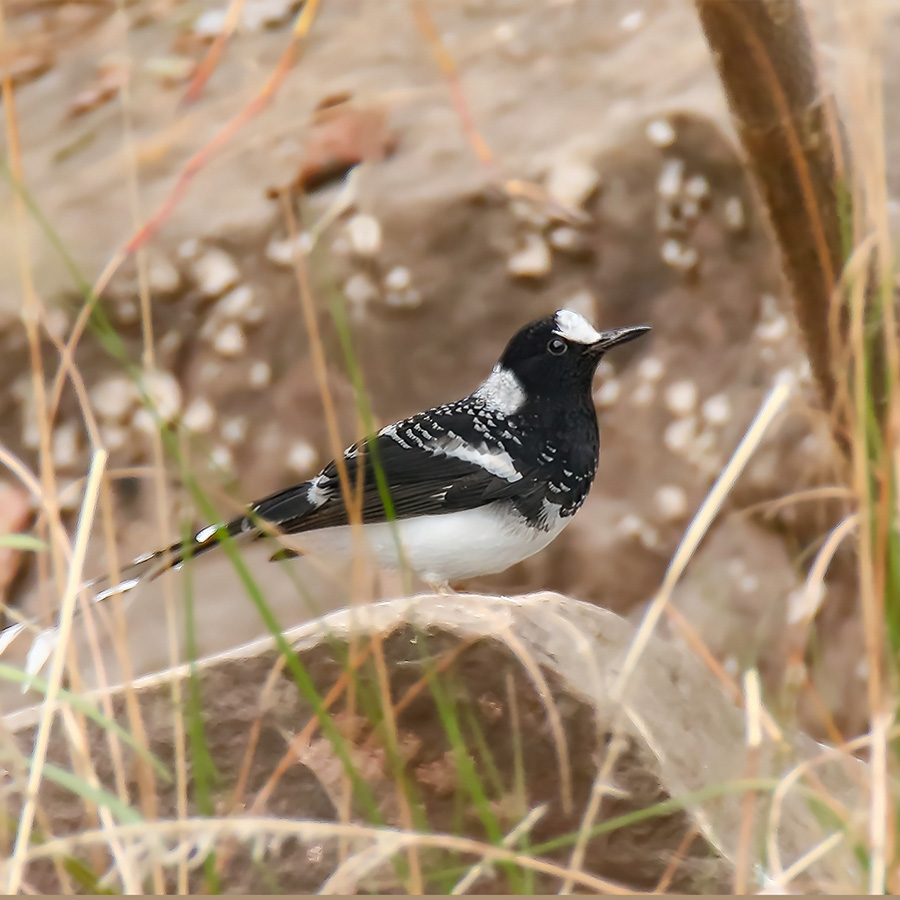
Description:
Large typical forktail, but with white-spotted mantle. From other forktails by combination of large size and very long tail, white spotting on black mantle, prominent white forehead, and black of throat extending to breast. White-spotted mantle separates it from White-crowned.
Distribution:
Rare resident in the extreme south-western parts of Ghizer and Diamer districts. Prefers rocky streams in dense mountain forests; winters at lower elevations and often on wider watercourses. Breeds at 600–3000m; winters in lowlands and foothills.
Behavior:
Forages on ground, working steadily upstream, in and around streambed, sometimes entering water up to breast level, but usually searching gaps between stones at water's edge and entering holes under rocks. Also makes brief aerial jumps after insects. Eats aquatic insects and their larvae, and small molluscs.
Photo Gallery:
Range & Occurrence:


Distribution Map of Spotted Forktail in Gilgit-Baltistan (Status: Rare or Accidental Resident)
Seasonal Occurrence of Spotted Forktail
Resources:
Birds of Pakistan: Helm Field Guides (R. Grimmett & T. Inskipp)
The Birds of Pakistan (T. J. Roberts)
Birds of the Indian Subcontinent (C. Inskipp, R. Grimmett & T. Inskipp)
Birds of South Asia: The Ripley Guide (P. Rasmussen & J. Anderton)
Birds of India: Collins Field Guide (N. Arlott)
Handbook of the Birds of India and Pakistan (S. Ali & S. D. Ripley)
Handbook of the Birds of the World (https://www.hbw.com)
The Clements Checklist of Birds of the World, 6th Edition
iNaturalist BoGB (inaturalist.org/projects/birds-of-gilgit-baltistan)
Birds of Gilgit-Baltistan (http://fb.me/birdsgb)
*Gallery images on this page are shared from flickr.com, and are copyrighted to their respective creators or owners.
